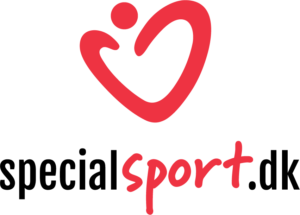Numbers & data
Nobody knows very much
In Denmark, we don’t register people with disabilities in any register, which is cool because we shouldn’t put people with disabilities in a ‘disability box’ that can be used and abused. It also makes it difficult to say anything about how many are one or the other when we talk about people with disabilities – including how many are active in clubs.
What data do we have access to?
There are a number of registries that tell us something:
- Statistics Denmark tells us how many children and young people receive special education in special schools, treatment schools, special classes and support classes under 9 hours per week.
- Medlemstal.dk is the common register of sports clubs in Denmark that tells you how many people have been active in disability sports in the years 2012 – 2019. Based on self-reporting from the clubs. After that, the registration method was changed so that data was no longer reported in the same way and the figures are effectively useless (only for the disability area, mind you).
What data does Specialsport.dk produce?
We love data at Specialsport.dk and we have a small team of volunteers dedicated to data processing, analysis, research and database management, because we know that knowledge is the way to better and more initiatives for our target group of children and young people with special needs and disabilities.
Baseline on schools with special education in Denmark
When we do school collaborations, we always start by establishing a ‘baseline’. It consists of a simple questionnaire that staff in each class fill out, answering the following questions about the students:
- How many people are active in a club in their spare time?
- How many have been active in the past?
- How many have never been active?
How active are students at a special school in Denmark?
In special schools where students have severe general learning disabilities with impaired cognitive understanding and often with a combination of several different disabilities, such as developmental disabilities, autism, ADHD and physical disabilities, we see a clear data picture in relation to club affiliation and activity:
- Approximately 15% of children in special schools (all students) where no effort has been made are active in associations. One effort could be to receive a local Specialsport Guide (catalog of sports, ed.).
- For example, 25-30% of special school children (all students) are active after receiving our Specialsport Guide (effect after about 6 months).
- 50-72% of special school children (selected grades) become active after we have worked with ‘sports internships’ as an offer to families in typically grades 4-7.
8 out of 10 students are outside the club communities
And no, we haven’t studied all special schools in Denmark, but we have data on exactly 922 students across 9 special education schools in Denmark, where the average for the first measured baseline is 20.8% students who are active in clubs.
Notes for the survey
The survey is done in close collaboration with the Disability Knowledge Center and we update continuously as we map more schools.
What are the differences between the different types of special education services?
We know the most about special schools – that’s where we do the vast majority of our work. But we’re also curious about what the club affiliation looks like in other types of special programs. Here’s what we know and have measured so far:
In special education and therapeutic schools, 40-50% of children are active in clubs. The dataset is much smaller (around 100 students in total) and all schools have been recipients of Specialsport Guides for 3-4 years prior to the surveys.
Are you more curious?
Call us for a chat – we love to share and learn.

